How I Developed This Recipe
For busy parents, it’s often those recipes that use up leftovers into something extraordinary. For me, it was fried rice. This recipe can use up leftover salmon, cooked rice, and eggs that are potentially sitting in your fridge waiting to be used.
I’ve already shared my ramen-style chahan, miso-flavored fried rice, and chicken ketchup rice on here, but this salmon version is next-level. It might be my best work yet.
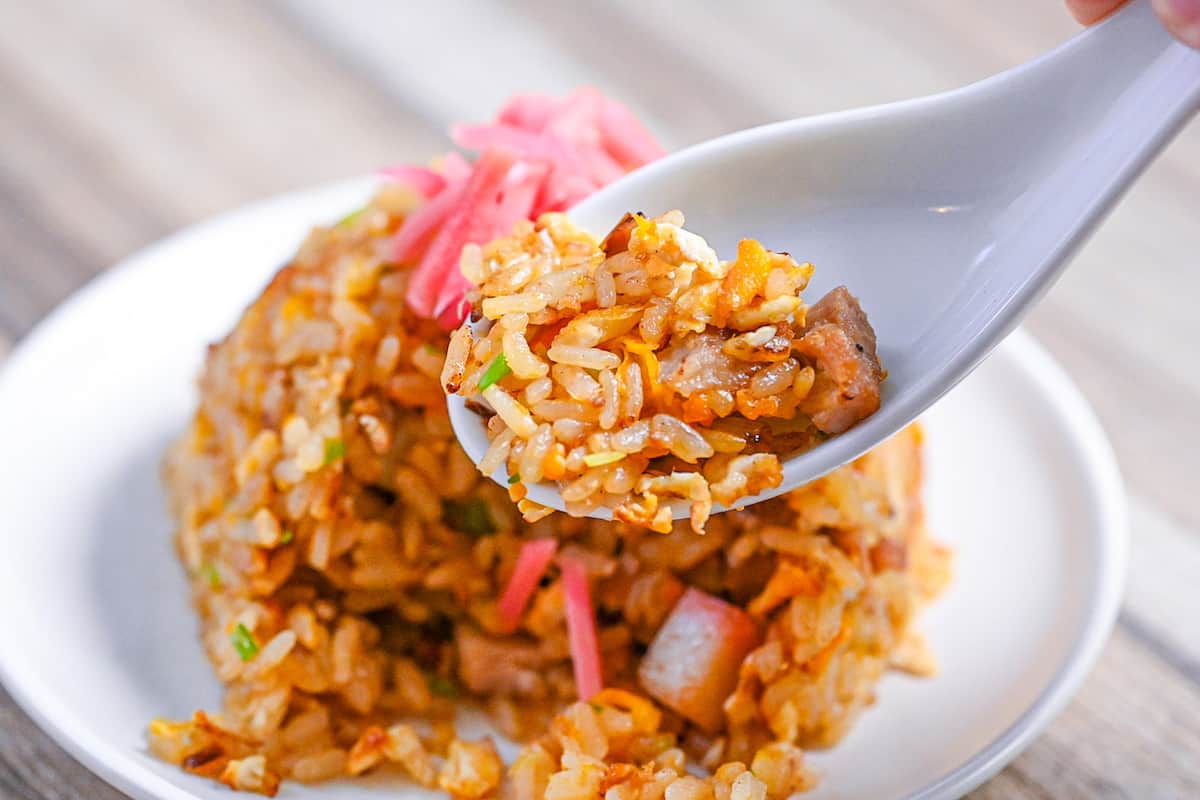
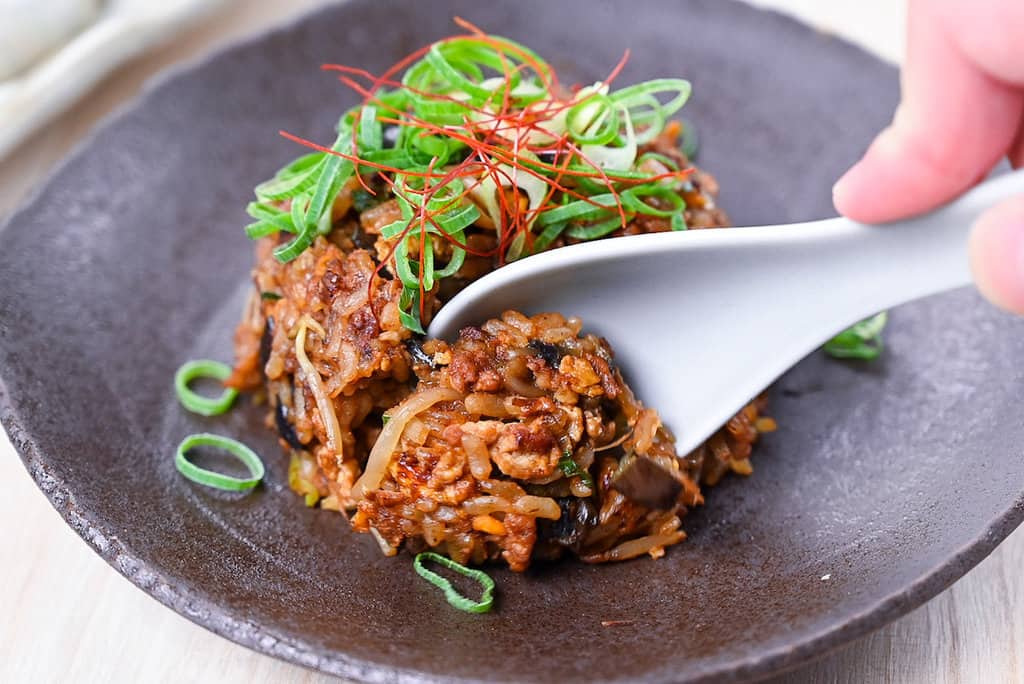
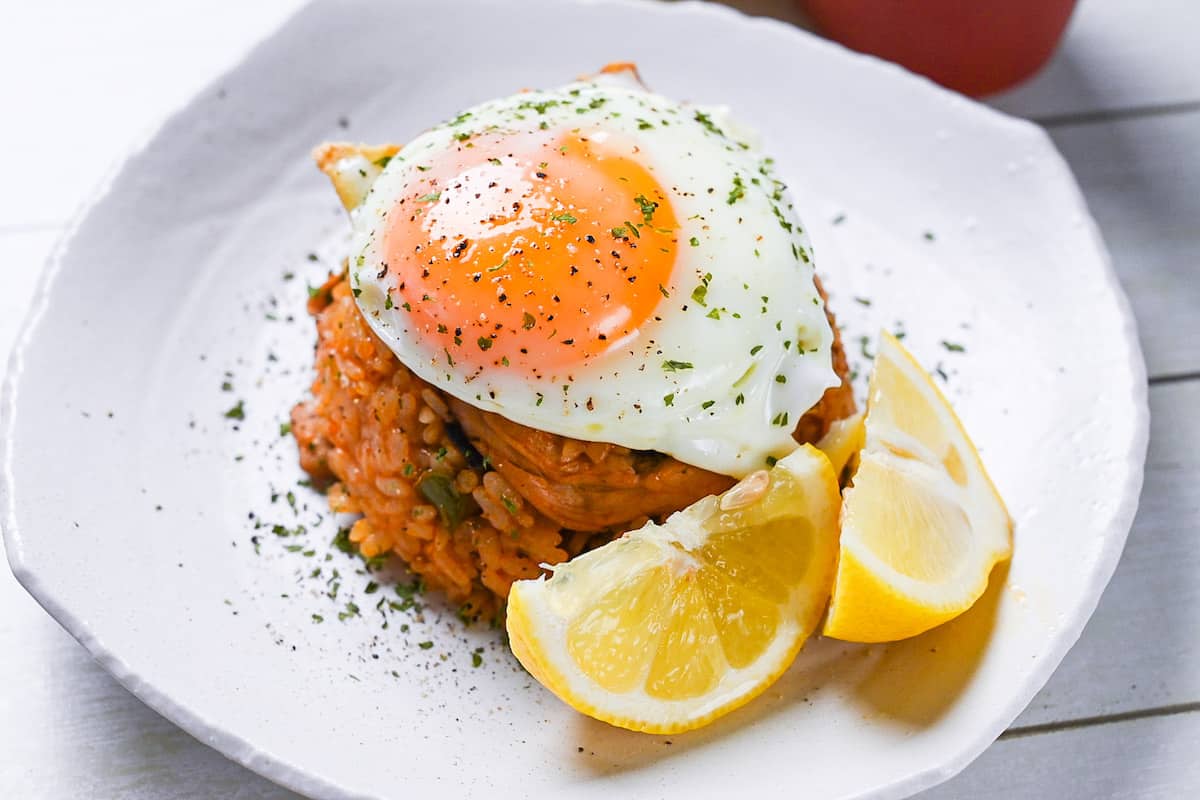
The subtle dashi infusion gives it that unmistakable Japanese essence while maintaining a clean profile that lets the salmon shine without competition. Each spoonful delivers that can’t-stop-eating quality that defines great fried rice, plus a secret ingredient that adds an unexpected dimension.
Plus, it comes together in just 20 minutes with minimal dishes to wash afterward. Ready to transform your weeknight dinner routine?
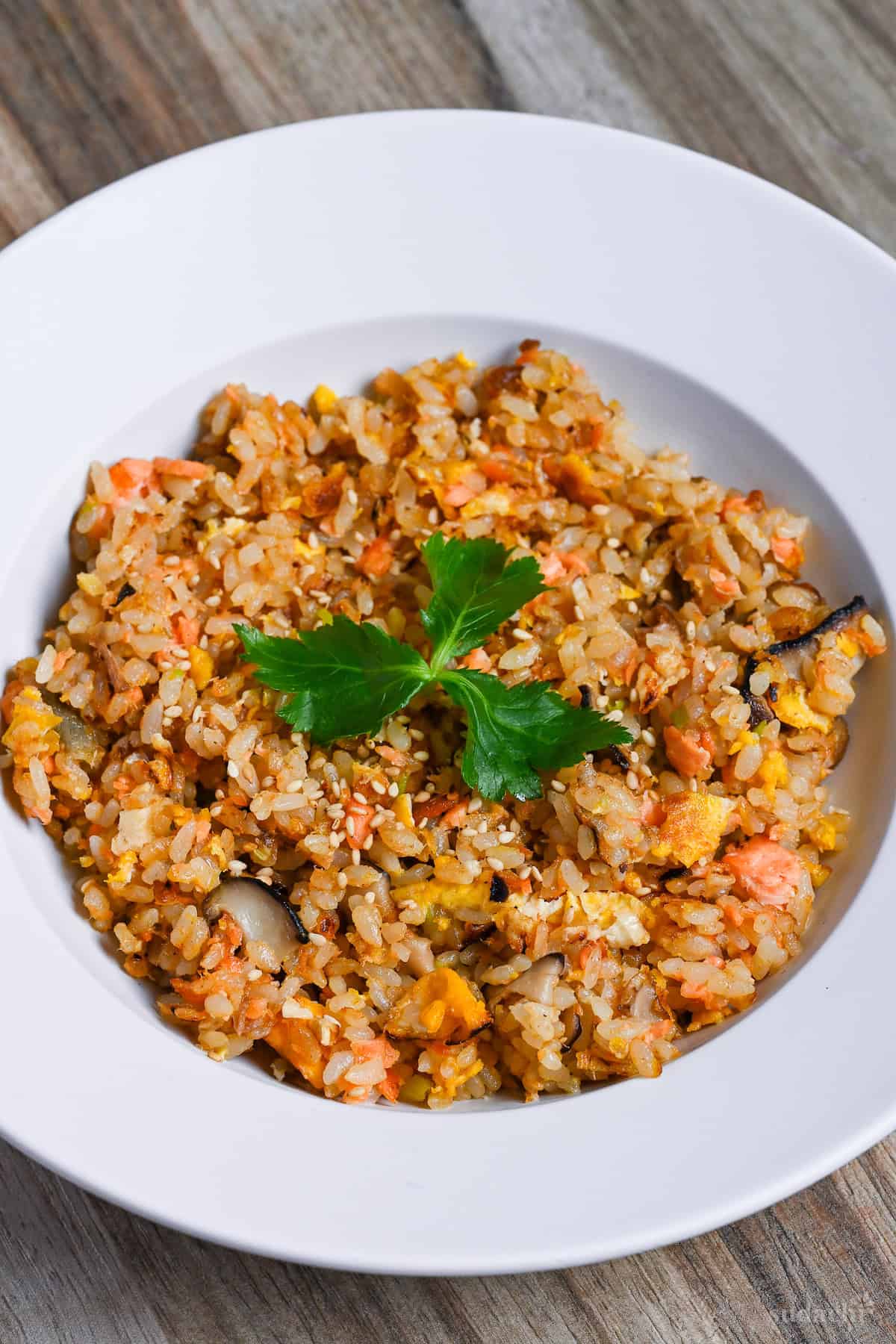
Visual Walkthrough & Tips
Here are my step-by-step instructions for how to make Salmon Fried Rice at home. For ingredient quantities and simplified instructions, scroll down for the Printable Recipe Card below.
This section aims to provide a comprehensive overview of the cooking steps and techniques with visuals. It also includes more in-depth tips and tricks and explains why I do what I do.
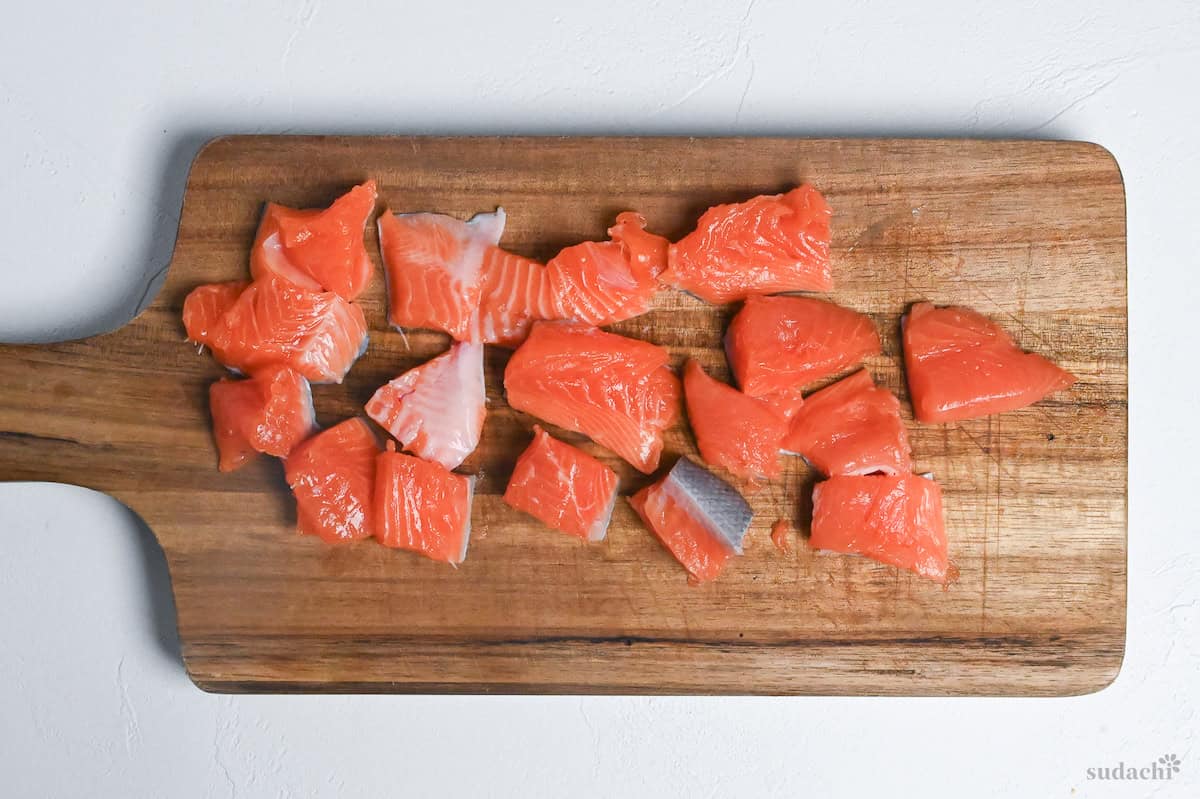
First, cut the salmon fillets (skin-on or skinless) into bite-sized chunks.
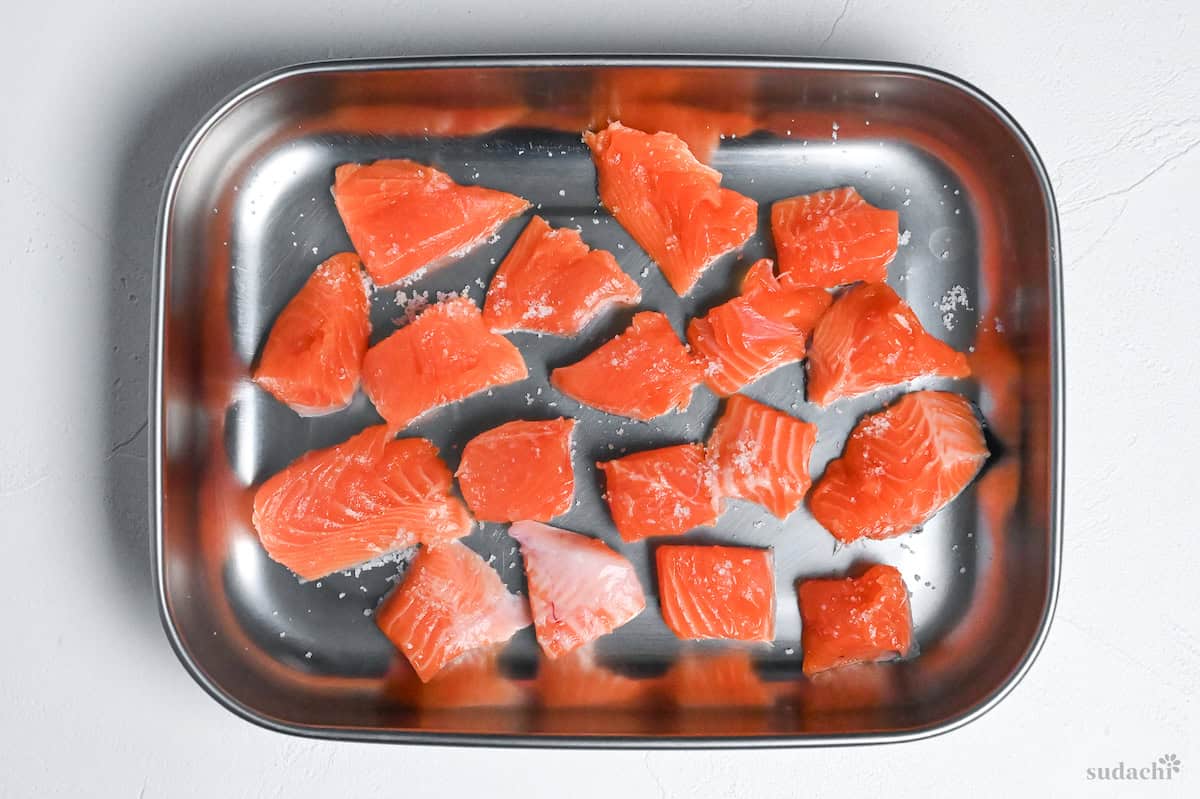
Sprinkle salt over the salmon pieces and let them sit for 10 minutes.
Salt tightens the protein structure of the salmon while drawing out water and trimethylamine compounds responsible for that fishy odor. If you want to get even better results, you can add a splash of sake to this step, as alcohol helps dissolve odor-causing compounds more effectively.
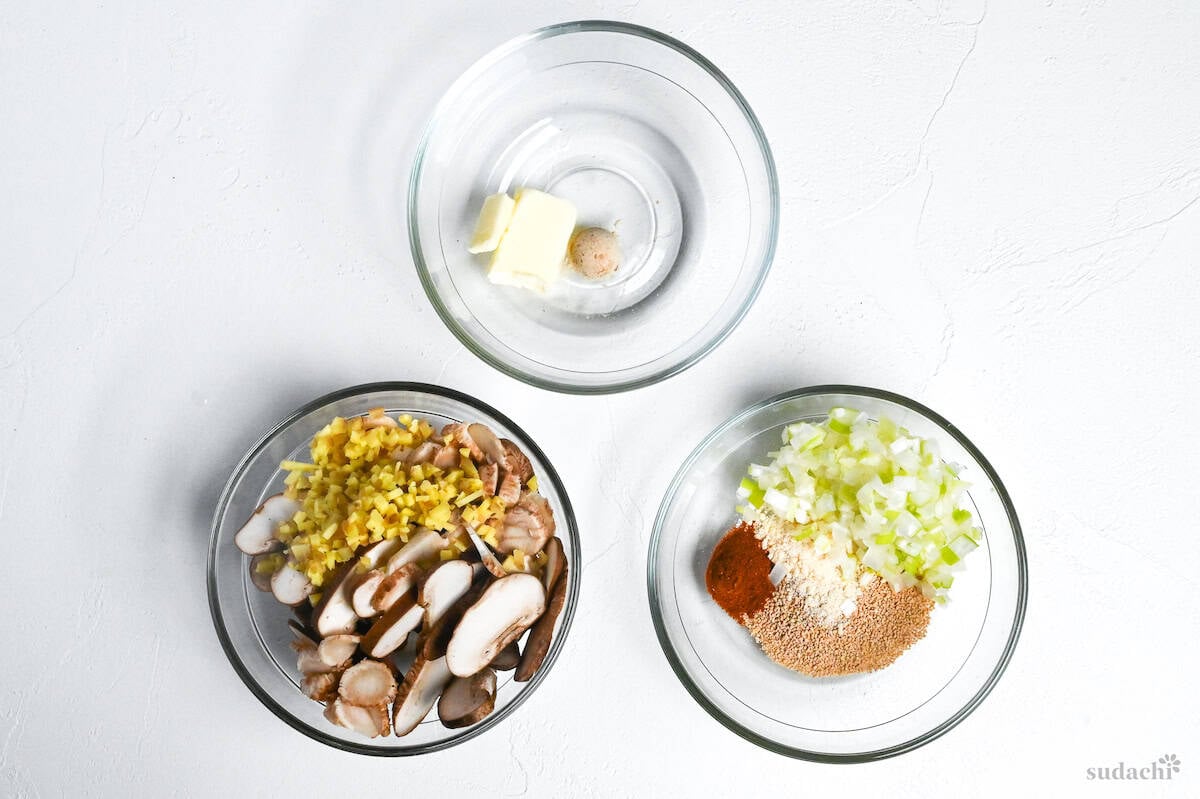
While you wait, be sure to measure out all the ingredients and divide them by the time you add them! Smooth and timely cooking is very important for fried rice!
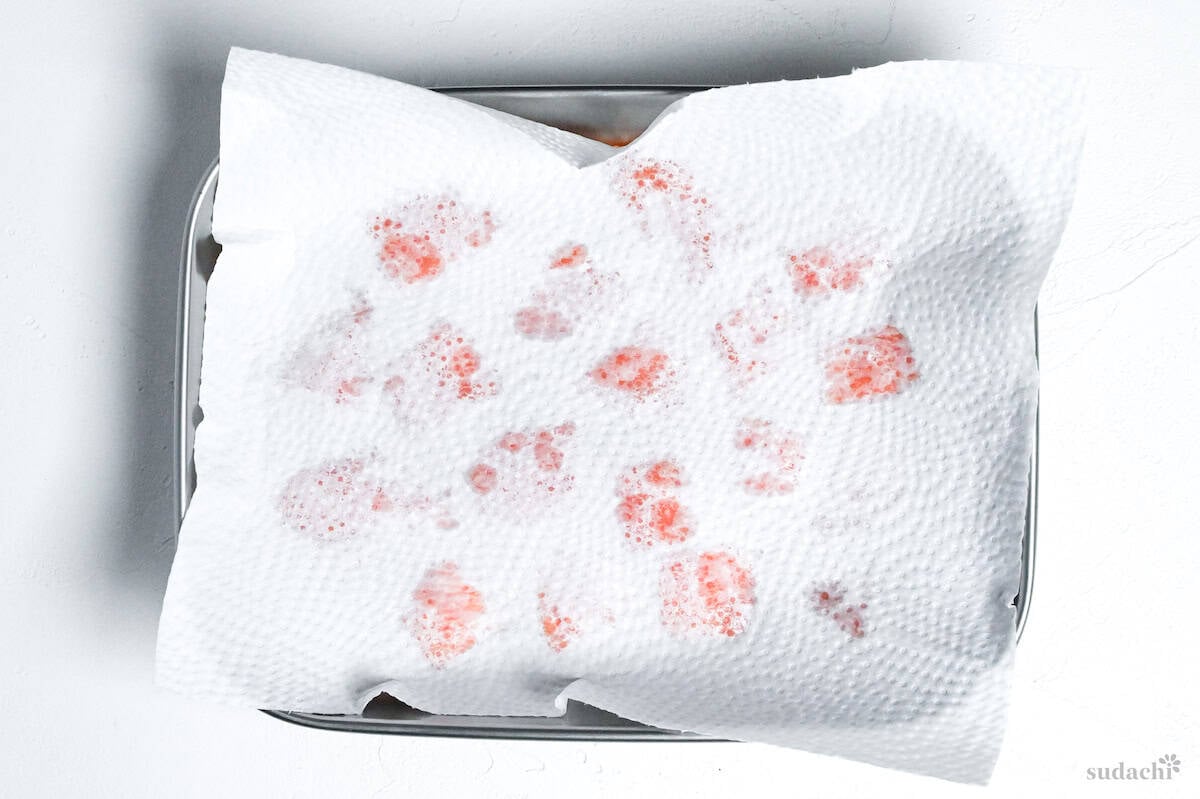
After 10 minutes, pat the salmon dry with paper towels to get rid of any moisture and odor compounds.
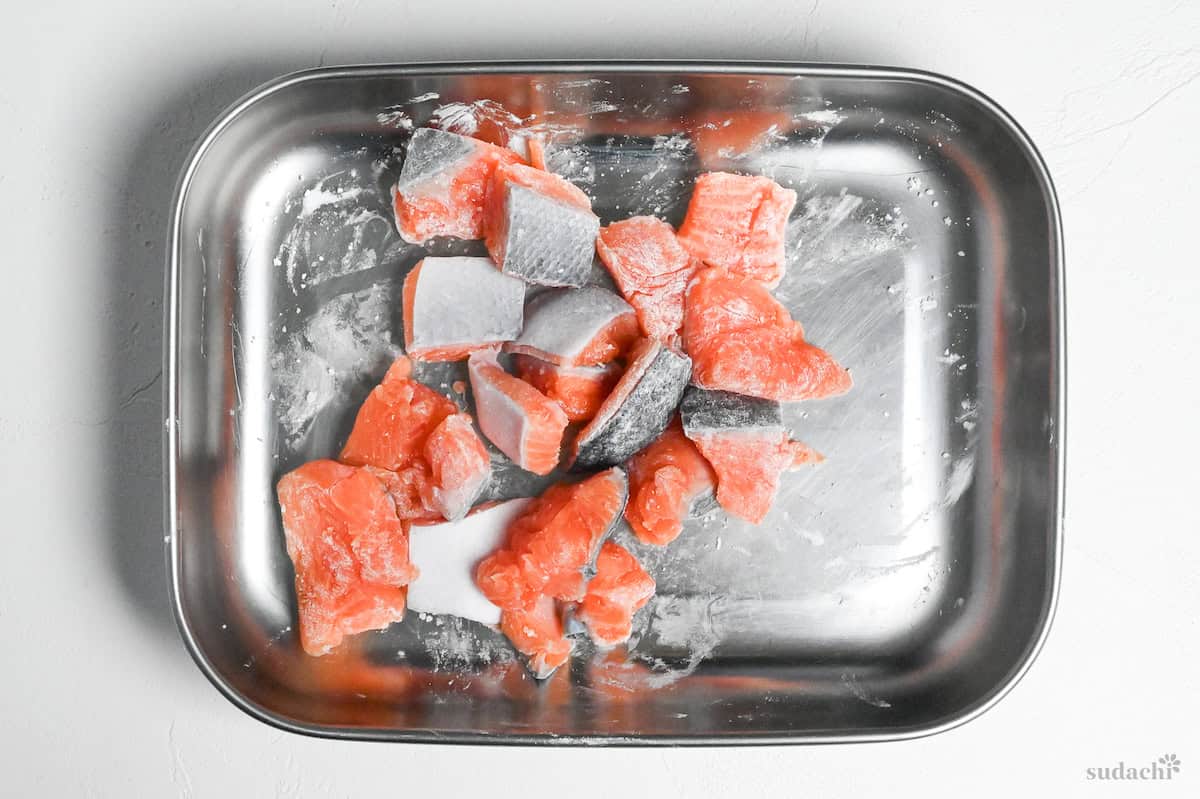
Then, lightly dust the salmon pieces with cornstarch.
You can also use salted salmon (shiozake) instead of fresh salmon. Salted salmon has less moisture and a firmer texture, which makes it great for fried rice because it won’t make the dish watery.
Just keep in mind that it’s already pretty salty, so you’ll need to cut back on the other salt-heavy seasonings afterwards.
If you want to get perfect results, use refrigerated Japanese rice. When rice is cooked fresh, it’s got a lot of moisture, and the starch granules are all swollen up. If you refrigerate it overnight, the starch will retrograde (crystallize), which makes the grains less sticky. This makes it perfect for fried rice.
Start by heating your wok over medium-low heat, and then add your cooking oil (if you want more intense flavor, you can use lard).
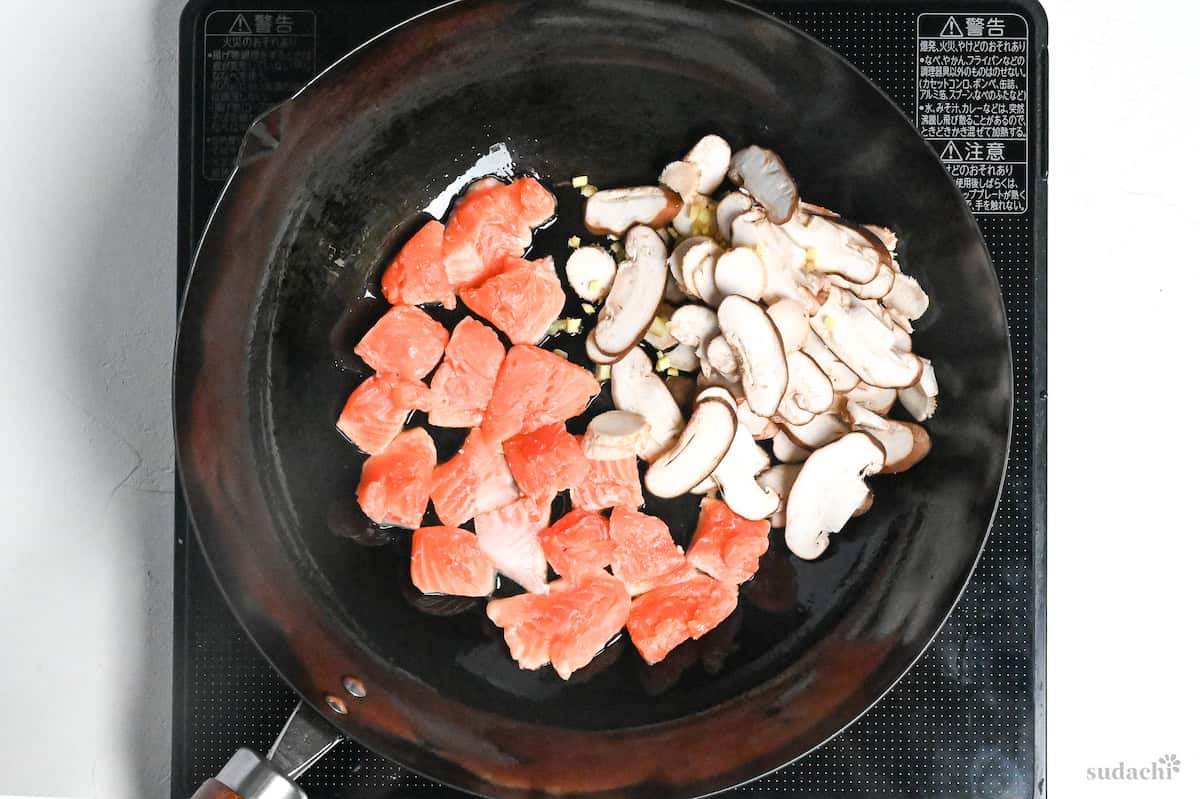
Cook the dusted salmon skin-side down, along with the ginger and mushrooms. The gentle cooking lets the fat render from the skin, so the salmon cooks through without getting tough or dry.
You can also use leftover grilled salted salmon or salmon flakes instead of fresh salmon. This is a time-saving option that gets rid of the salmon cooking step entirely.
Remember that these alternatives are already seasoned and salty, so you’ll need to reduce the other seasonings accordingly to prevent the dish from becoming overly salty.
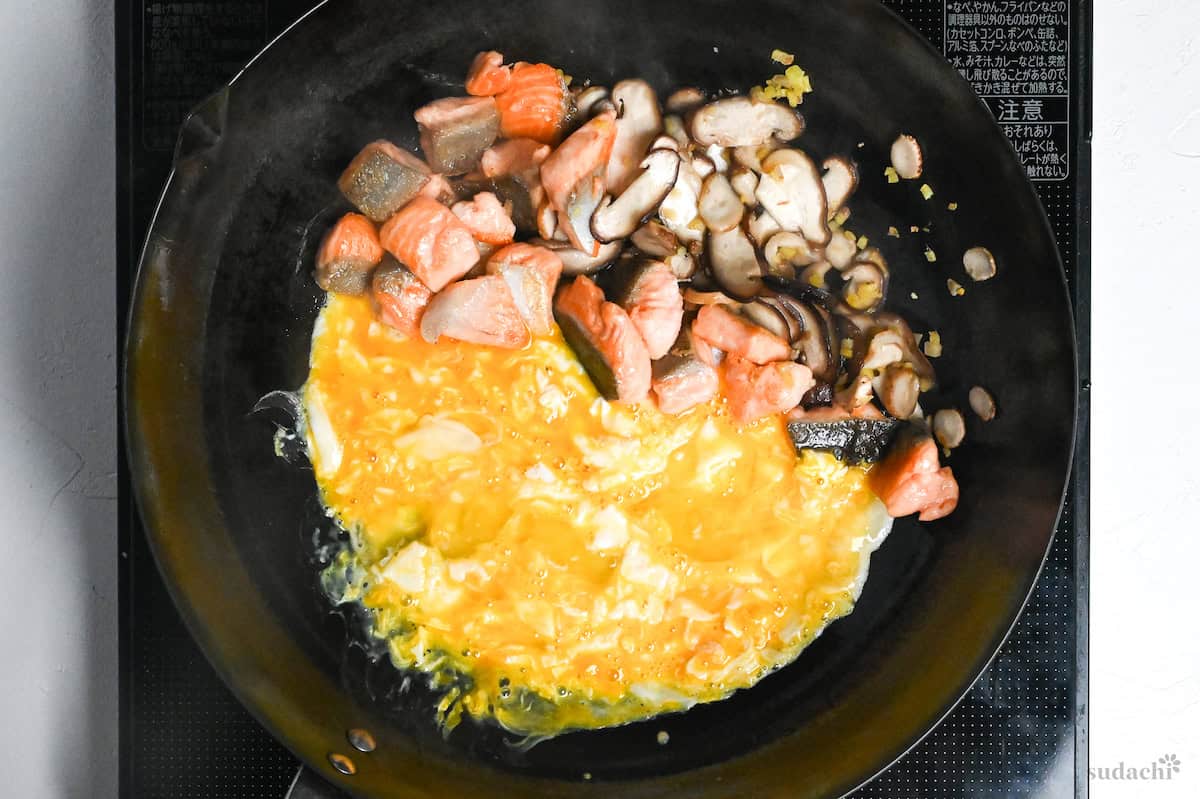
When the salmon is cooked on both sides, crank the heat up high and move the cooked ingredients to the side of the wok. Just crack the eggs into the empty space and scramble them until they’re half-cooked.
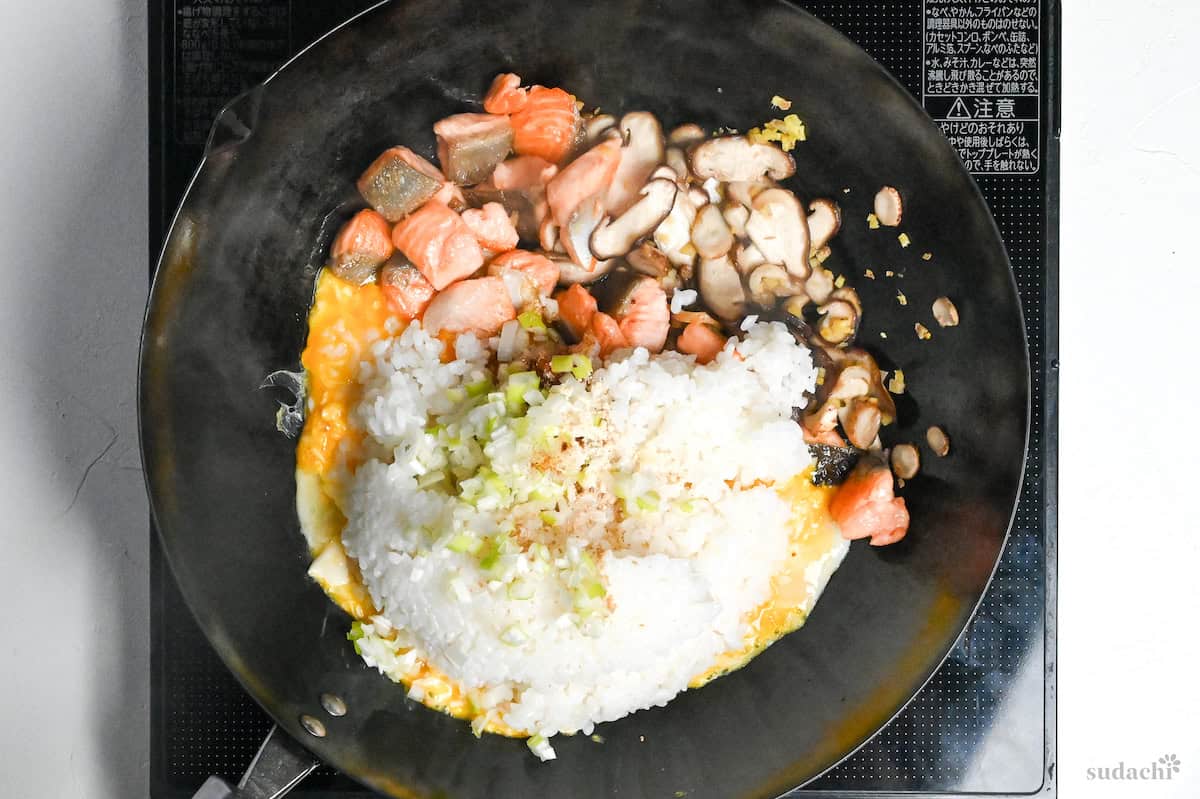
Add the rinsed, drained rice to the scrambled egg.
Then add the dashi granules, chicken bouillon powder, the white part of the Japanese leek (or a regular leek), and the smoked paprika powder (my secret ingredient to add depth with its smoky aroma and sweetness!). Mix everything together so the egg covers the rice grains. Keep the wok on the heat without tossing it too much – home stoves don’t generate enough heat to keep the wok at a steady temperature when you lift it up too frequently.
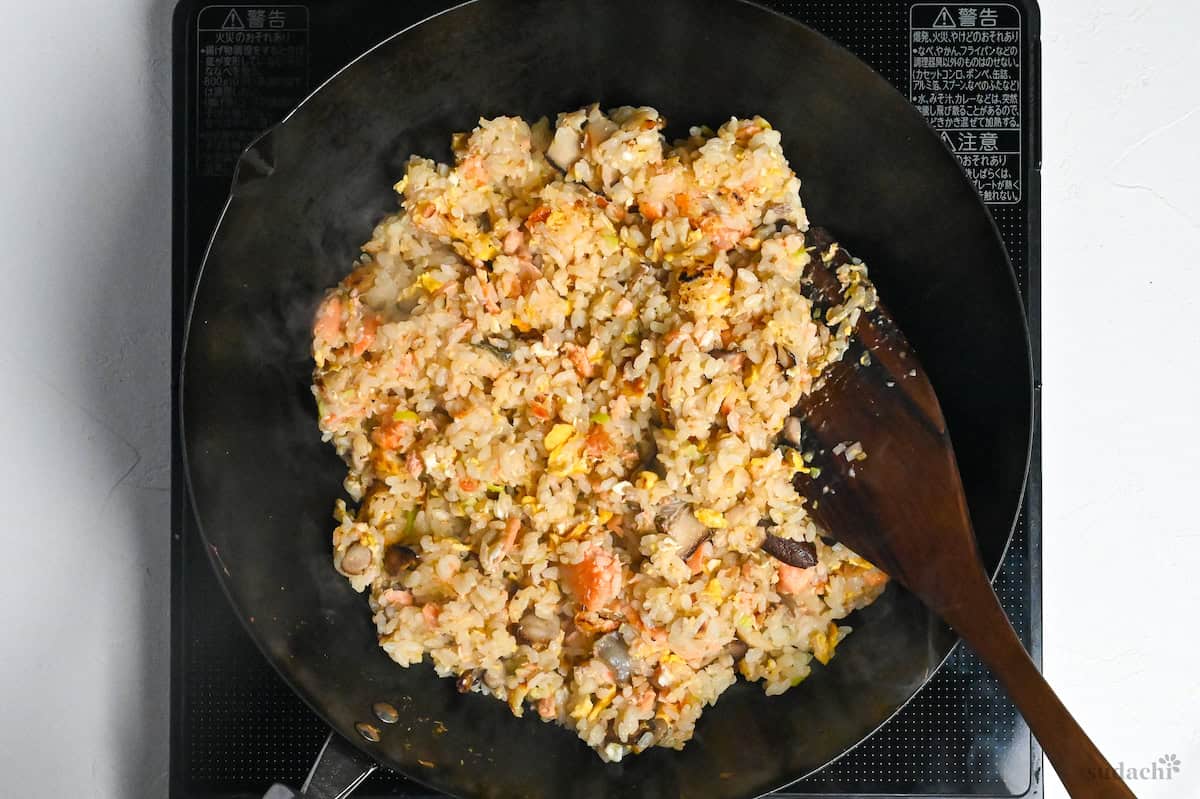
When the rice is fluffy and mixed with the eggs, pour soy sauce around the wok rim instead of on top of the rice.
This technique lets the soy sauce caramelize a bit on the hot wok surface, creating a nice aroma through Maillard reactions while keeping the rice from getting soggy.
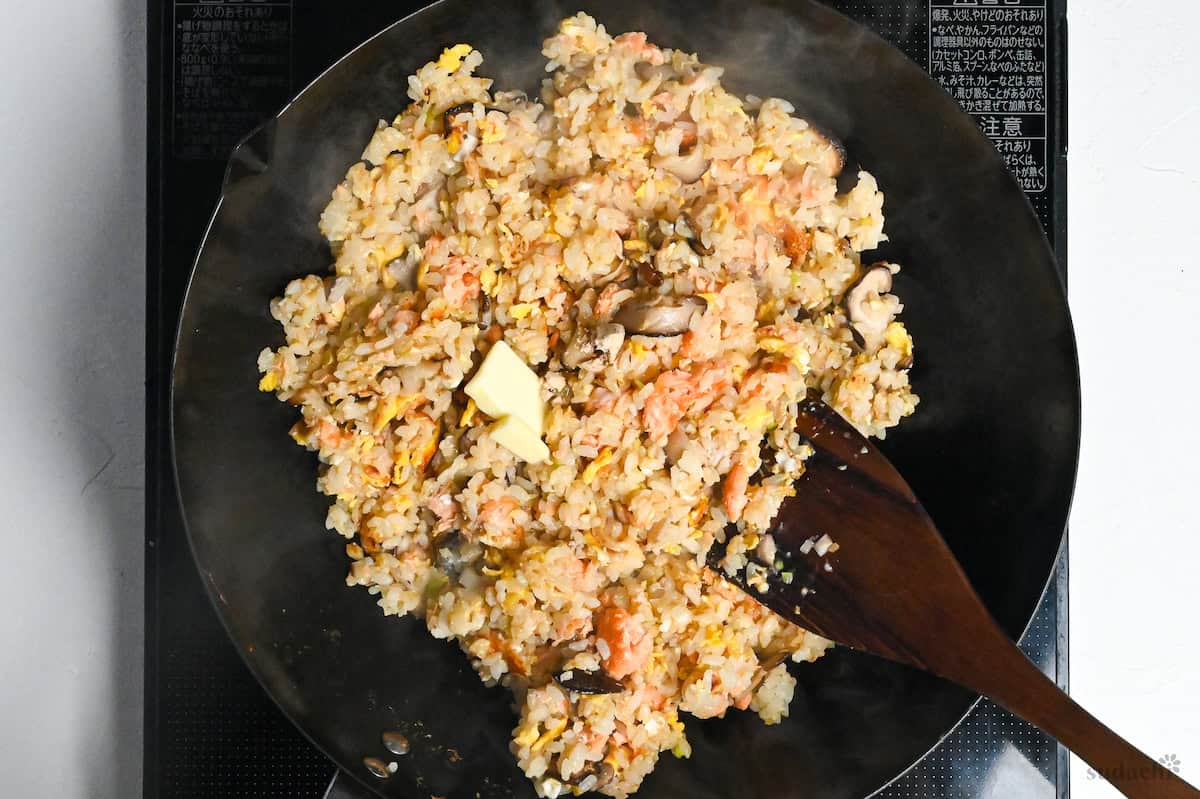
Add butter, sugar, salt, and white pepper. For the salt and pepper, taste as you go and adjust the amount to your liking. I added ¼ tsp and ⅛ tsp respectively.
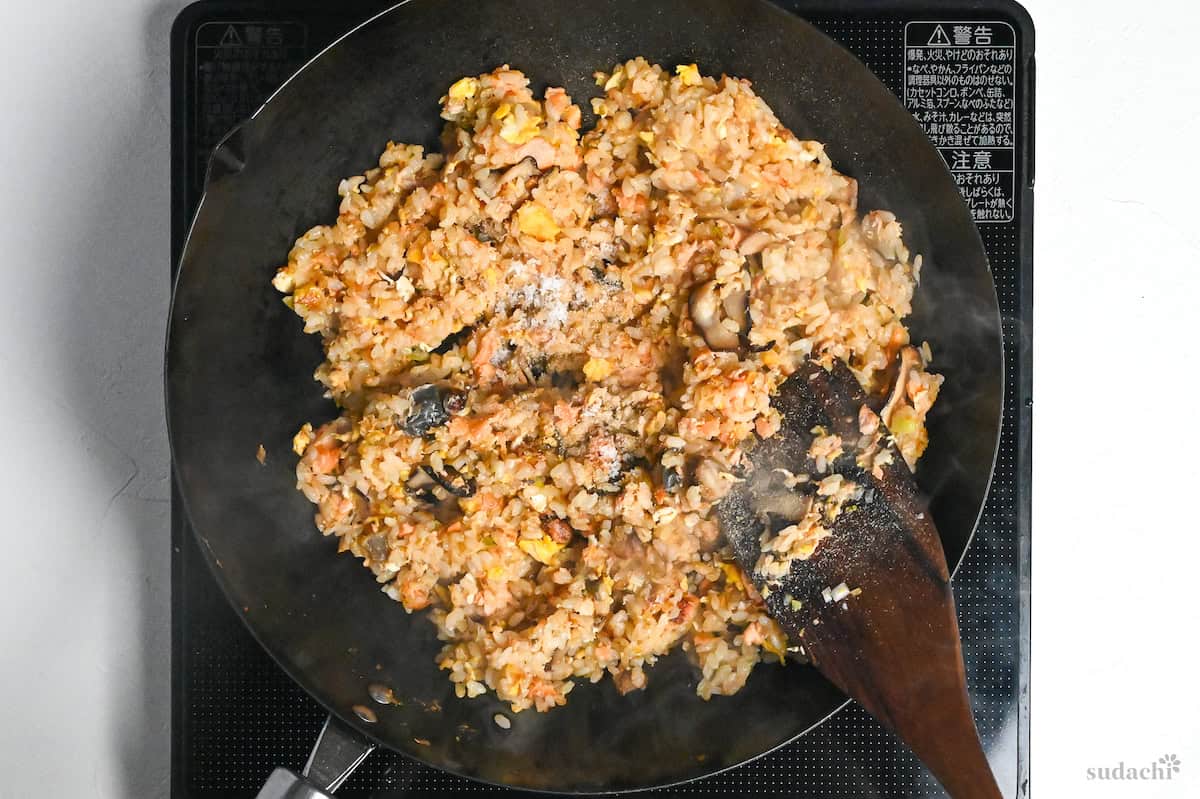
The fat in butter adds a richness that pairs great with salmon, and the slight sweetness of sugar balances out the savory flavors. White pepper provides subtle heat without visual interruption or the stronger aromatic profile of black pepper.
Once everything’s mixed together, add lemon juice and a bit of sesame oil, then take it off the heat right away. Give it a stir to mix it all together, using the residual heat.
Lemon juice not only adds brightness, but its citric acid neutralizes any remaining alkaline amine compounds (fishy odors) in the salmon.
Adding sesame oil at the very end and immediately removing from heat preserves its volatile aromatic compounds, which would otherwise evaporate if cooked too long.
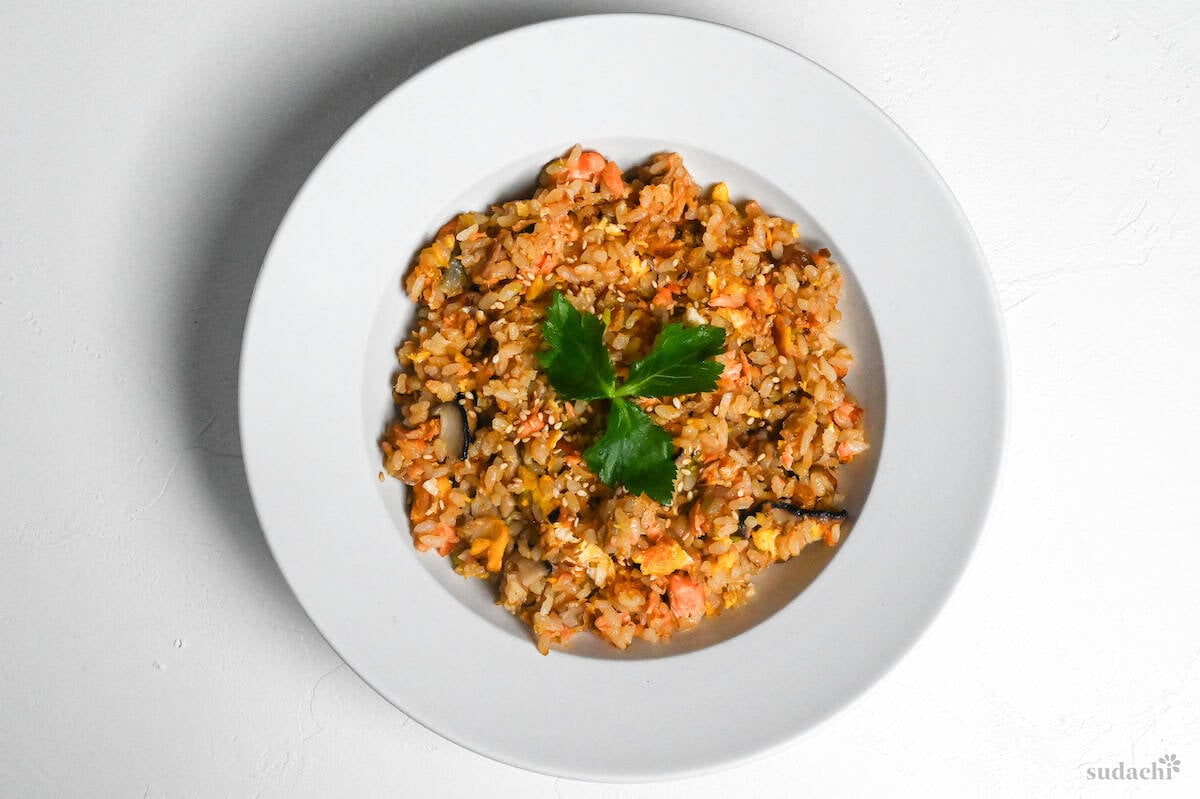
Garnish with white sesame seeds and chopped mitsuba (Japanese parsley) just before serving.
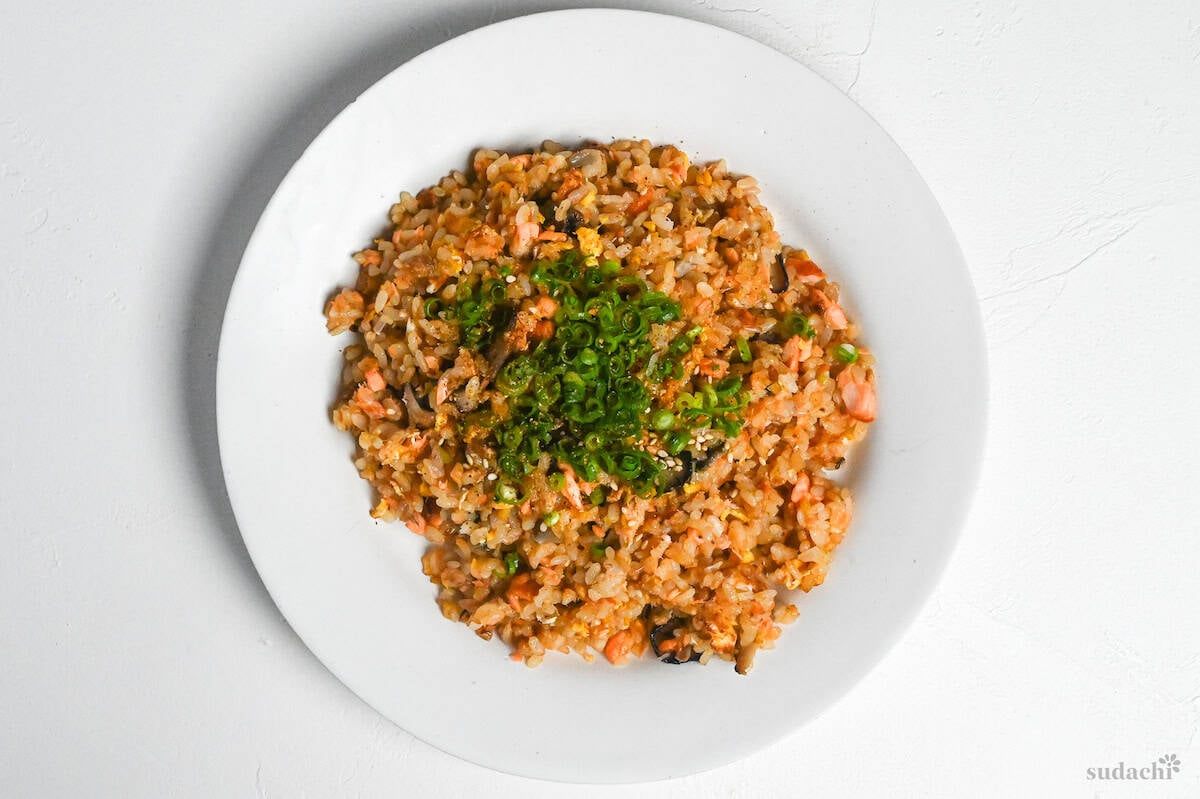
If you can’t find mitsuba, you can substitute it with chopped shiso leaves (perilla) or green onions. If you want to mix things up a bit, you could try topping it with shichimi togarashi (Japanese seven-spice blend), a drizzle of chili oil, or even some crispy garlic chips.
Jump to Full Recipe MeasurementsEssential Tips & Tricks
- Cold rice is preferred – Using refrigerated rice makes a difference for perfectly separated grains.
- The egg-first method – Cook scrambled eggs first until half-set, then add rice. This creates a protective coating around rice grains that prevents sticking.
- Edge-pour technique for soy sauce – Pour soy sauce around the hot edges of the wok rather than directly onto rice to develop aroma while preventing sogginess.
- Add sesame oil last – Add aromatic oils at the very end and immediately remove from heat to preserve their volatile flavors.
- Prep all ingredients before heating the wok – Once cooking starts, the process moves quickly. Having everything ready prevents overcooking any components.
With these simple tips in mind, you’re set for success every time you make this salmon fried rice.
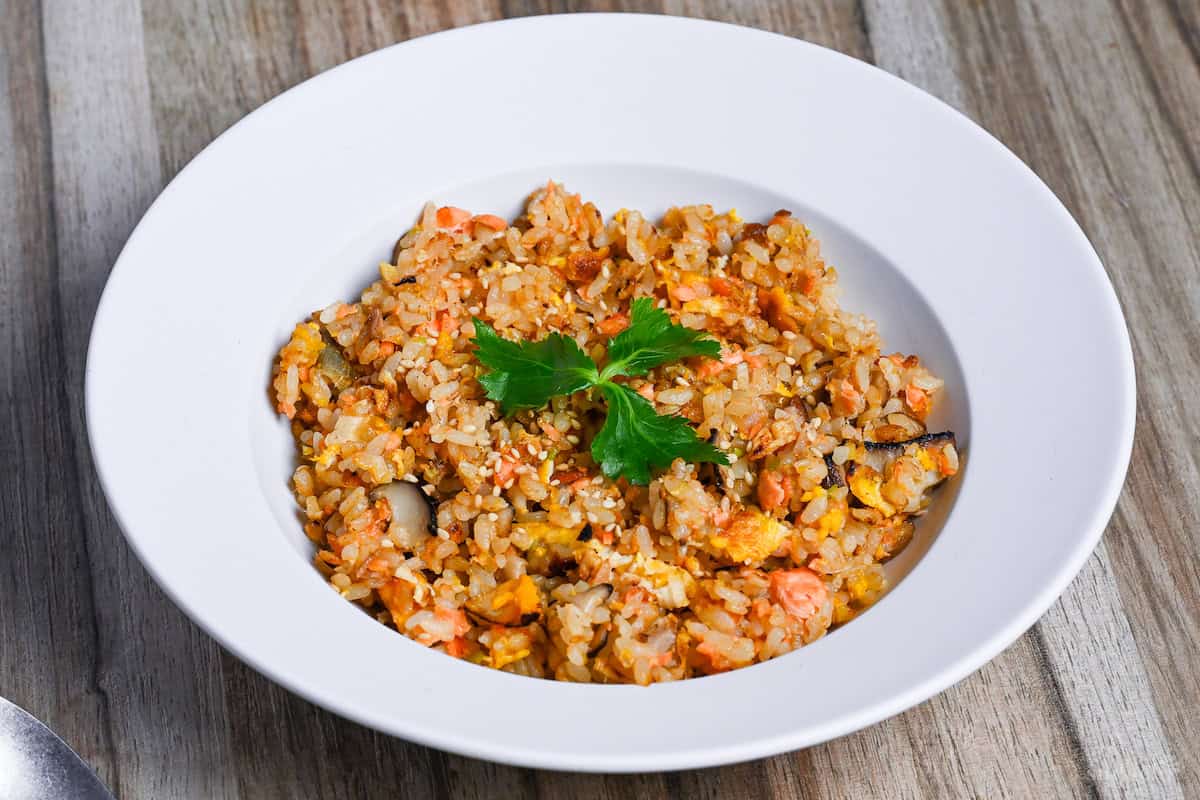
Meal Prep & Storage
Fried rice isn’t the best choice for meal prep. It’s very quick to make anyway, so I guess there’s no need to prepare it in advance.
However, one smart prep strategy is to prepare the rice ahead of time. If you don’t have leftover rice on hand, make a rice dish the night before and set aside the portion you’ll need for your fried rice. Store it covered in the refrigerator overnight.
For leftover salmon fried rice:
- Cool completely and quickly by spreading in a thin layer.
- Store in airtight containers in the refrigerator.
- Consume within 1-2 days,
- Reheat thoroughly using a frying pan with a bit of cooking oil.
Serving Suggestions
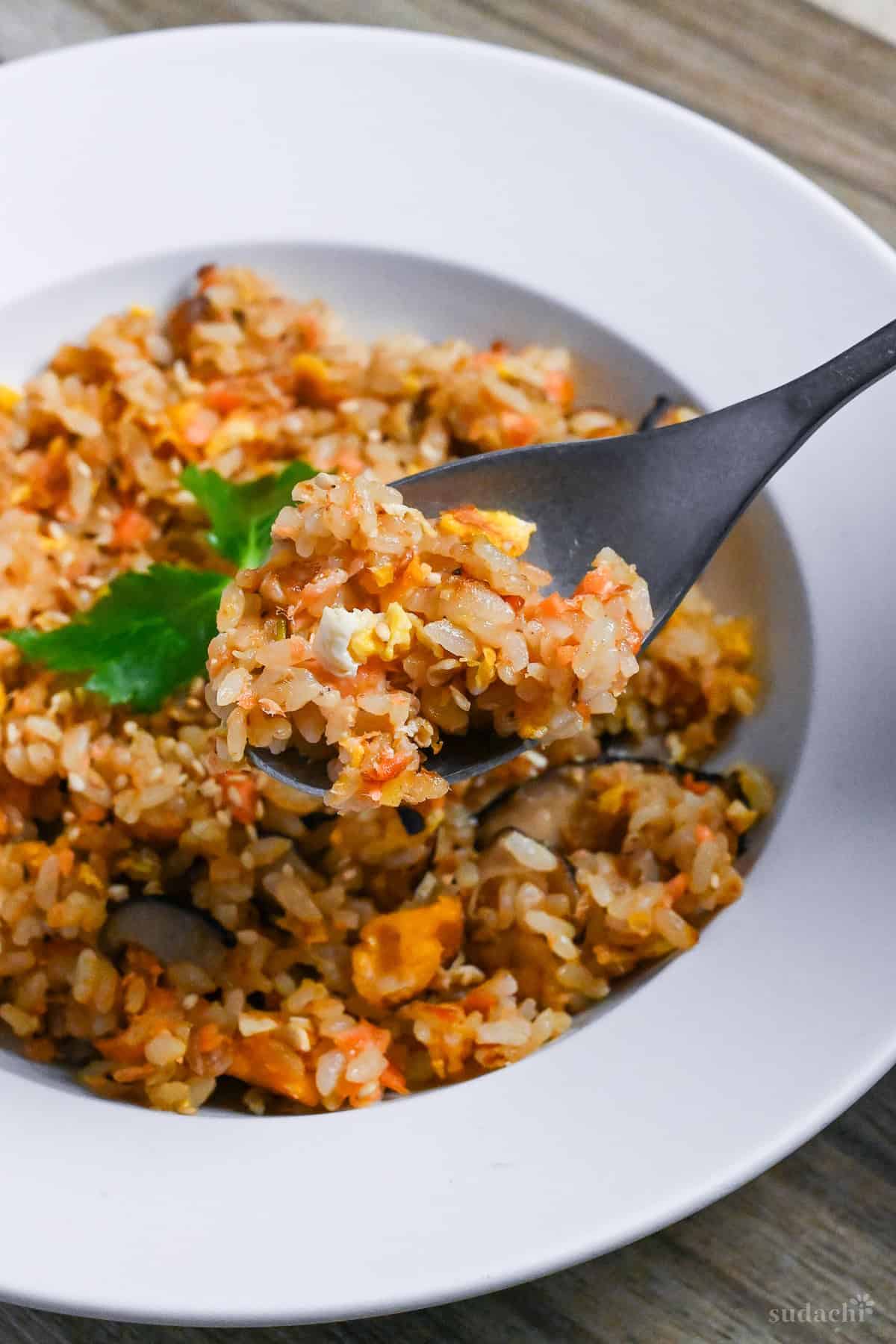
I hope you enjoy this recipe! If you try it out, I’d really appreciate it if you could spare a moment to let me know what you thought by giving a review and star rating in the comments below. It’s also helpful to share any adjustments you made to the recipe with our other readers. Thank you!
More Salmon Recipes
- Crispy Salmon Skin Salad
- Soy Sauce & Butter Salmon
- Salmon Rice Balls (Sake Onigiri)
- Pan Fried Teriyaki Salmon
Hungry for more? Explore my salmon recipe collection to find your next favorite dishes!

Salmon Fried Rice
Equipment
- A large wok or deep frying pan
Ingredients
- 2 salmon fillets skin-on, approx. 75g per fillet
- ½ tsp salt to draw out moisture and fishy odors
- 3 fresh shiitake mushrooms thinly sliced
- 1 tbsp ginger root finely diced
- 2 tbsp Japanese leek (naganegi) white part, finely diced
- ¼ tsp smoked paprika powder
- 1 tsp dashi granules
- ½ tsp Chinese-style chicken bouillon powder
- 1 tsp unsalted butter
- ¼ tsp sugar
- 1 tsp cornstarch or potato starch
- 350 g cooked Japanese short-grain rice refrigerated overnight
- 1 tbsp cooking oil neutral flavored, like vegetable, canola, or rice bran
- 2 eggs
- 1 tsp Japanese soy sauce (koikuchi shoyu)
- salt to taste
- ground white pepper to taste
- ¼ tsp lemon juice
- ½ tsp toasted sesame oil
- toasted white sesame seeds topping
- Japanese wild parsley (mitsuba) topping, or chopped shiso leaves or green onions
My recommended brands of ingredients and seasonings can be found in my Japanese pantry guide.
Can’t find certain Japanese ingredients? See my substitution guide here.
Instructions
- Cut 2 salmon fillets into bitesize pieces and sprinkle with ½ tsp salt. Leave to rest for 10 minutes.

- While you wait, take 3 small bowls. Thinly slice 3 fresh shiitake mushrooms and finely dice 1 tbsp ginger root, and place them together in one bowl. In another bowl, add ¼ tsp smoked paprika powder, 1 tsp dashi granules, ½ tsp Chinese-style chicken bouillon powder and 2 tbsp Japanese leek (naganegi) finely chopped. In the final bowl, add 1 tsp unsalted butter and ¼ tsp sugar. Set all of the bowls by the stove for later.

- After 10 minutes, pat the salmon pieces dry with kitchen paper and sprinkle with 1 tsp cornstarch. Mix until every piece has a thin even layer of starch.

- Heat a wok on medium-low and add 1 tbsp cooking oil (or lard). Once hot, add the salmon, mushroom and ginger. Fry until the salmon is cooked on the outside and the mushrooms are slightly softened.

- Push everything to one side of the wok, and increase the heat to high. In the empty space, crack 2 eggs and mix to scramble until half-cooked.

- Add 350 g cooked Japanese short-grain rice and contents of the bowl with Japanese leek, dashi, chicken bouillon, and paprika powder. Mix thoroughly.

- Pour 1 tsp Japanese soy sauce (koikuchi shoyu) around the edges of the wok and toss the rice a few times.

- Add the butter and sugar along with salt and ground white pepper to taste. Mix well, then add ¼ tsp lemon juice and ½ tsp toasted sesame oil before mixing once more.

- Divide between serving dishes and garnish with toasted white sesame seeds and Japanese wild parsley (mitsuba) or chopped green onions. Enjoy!

Notes
- For detailed instructions on how to cook Japanese rice, please refer to my guide.
- You can substitute salted salmon for fresh salmon. However, remember that it’s already quite salty, so significantly reduce other seasonings if using it. Also, skip the salt-curing step when using salted salmon.
- Leftover grilled salmon or salmon flakes also work well as time-saving alternatives. If using these pre-cooked options, skip the salmon cooking step entirely and adjust seasonings downward to prevent excess saltiness.
- Prep all ingredients before heating the wok, as the cooking process moves quickly once started and prevents overcooking any components.
- Store leftovers in airtight containers in the refrigerator after cooling completely and consume within 1-2 days.
- When reheating leftovers, use a frying pan with a small amount of oil rather than a microwave to best restore the original texture and flavor.
- Serving ideas: Authentic miso soup, Pickled cucumber, Ohitashi salad, Sunomono salad.
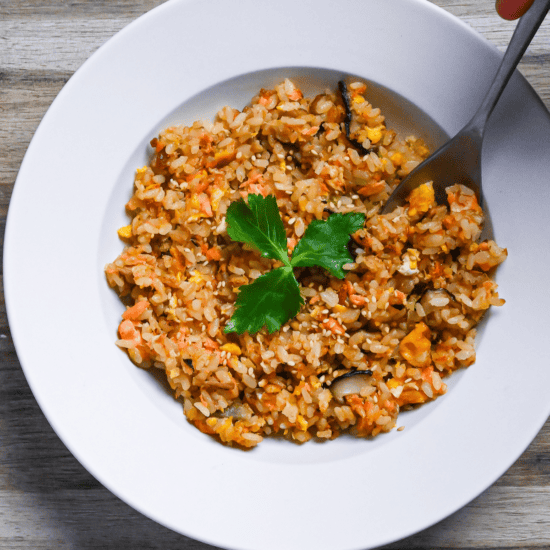



Leave a rating and a comment